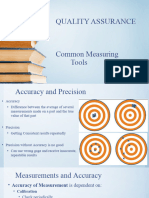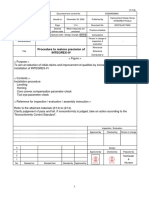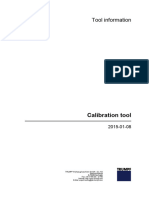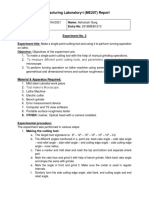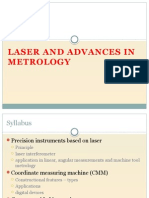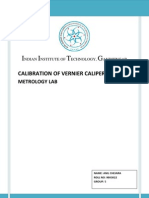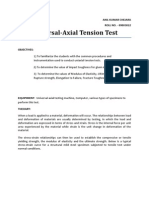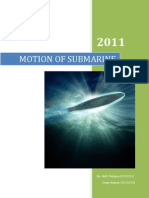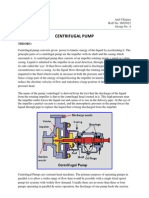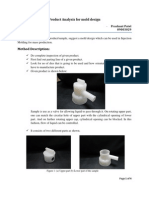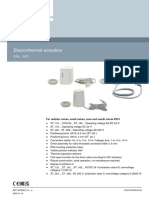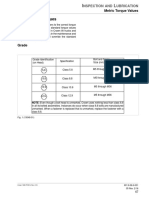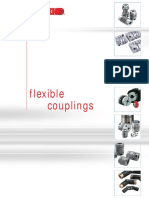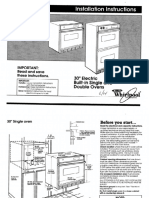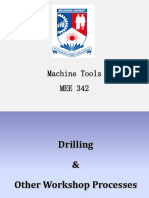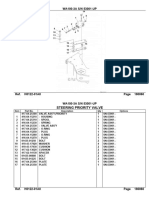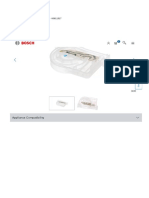MACHINE TOOL TESTING
Name: Anil Chejara Roll no. : 9003022 Group no. : 5
Background:
Geometrical and cutting tests are performed on machine tools in order to assess their manufacturing accuracy and process capability. For precision machining it is therefore important to measure and compensate motional deviations. These tests are carried out using measuring instruments for e.g. dial gauges, micrometers telescopes, mandrels, straight edges. These tests are designed to measure the accuracy of assembled machine tool. Tests are not carried out on individual components but they are performed on fully assembled tool. The dial gauges are more frequently used .The principle of dial indicator (dial gauge) is that the linear mechanical movement of the stylus is magnified and transferred to the rotation of pointer. The accuracy of dial indicator can be up to 0.001mm.
Aim: To ensure manufacturing accuracy of assembled too mchine using dial gauge.
For Lathe machine accuracy of main spindle is measured in terms of the trueness of axis slip, alignment of axis with axis of other spindles and parallelism between the spindle axis and sideways.
Process:
1. To check trueness of spindle a cylindrical (perfect) is inserted in it. 2. Check the reading of dial gauge on various points of this work piece. 3. Do same (3) process for work piece using tail stock supported to it.
�4. Rotate spindle to take rotational trueness of spindle. 5. Again do same (5) process for work piece using tail stock supported to it. 6. Spindle is rotated slowly to avoid the bearing vibration.
Experimental Data:
The points 1,2,3,4 & 5 are at the distance of 10, 60, 110, 160, 210 mm from the tail stock end. 1. Axis slip keeping dial gauge horizontal, Point Number With tail stock use Without tail stock use (m) (m) 1 0 0 2 22 58 3 50 149 4 70 220 5 80 287 Error
1000 900 800 700 600 500 400 300 200 100 0 1 2 3 4 With tail stock use Without tail stock use
2. Axis slip keeping dial gauge vertical, Point Number With tail stock use Without tail stock use (m) (m) 1 0 0 2 -26 -40 3 -44 -78
�4 5
-57 -82
-101 -140
0 -20 1 2 3 4 5
error in micrometer
-40 -60 -80 -100 -120 -140 -160 With tail stock use (m) Without tail stock use (m)
distance from free end
3. Run out Measure at five different points, Point Number With tail stock use Without tail stock use (m) (m) 1 460 950 2 320 810 3 340 680 4 345 558 5 310 423 Error
1000 900 800 700 600 500 400 300 200 100 0 1 2 3 4 5 With tail stock use (m) Without tail stock use (m)
�4. Dial Gauge reading of the spindle put in vertical position, Point Number 1 Reading 120 m
Observations:
1. Spindle is not perfectly aligned to its axis and has some deflection in axis of rotation. 2. The deviation in axis decrease when work piece is supported by tail stock. 3. Work piece also deviates from the perfect circularity. This is clear from its run-out calculation taken by the dial gauge.
Error:
1. If work-piece is not fully tight then it will cause error. 2. Dial gauge should not be pressed too much along to surface of work piece. 3. Dial gauge should be fixed properly. Any movement or vibration of dial gauge during experiment may generate error. 4. Human error possible while taking reading.
Suggestion:
1. Non contacting devices can be used for reducing instrumental error.


























